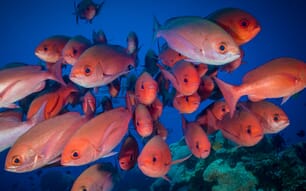"It's not that the salmon are biting less, there are less of them," explained Eva Garca Vzquez, lead author and Functional Biology researcher at the University of Oviedo (Spain).
The study, published in Transactions of the American Fisheries Society, shows a "very marked" decline in Atlantic salmon populations in the Narcea, Sella and Cares rivers (Asturias, northern Spain), especially during the last decade, almost simultaneously with the reduction in the amount caught by recreational fishermen.
"Given that fishing effort has almost been constant until this year, and that populations have reduced, exploitation of the populations has increased. There's the same amount of fishermen, but less fish," Garca Vzquez stressed.
To reach these conclusions, researchers obtained DNA samples from fish scales and estimated the actual population size (number of salmon that reproduce and contribute to population survival) in Asturian rivers from the 1980s, using different statistical methods, all of which were consistent with one another.
According to the research team, to which the University of Exeter and Westcountry Rivers Trust, Cornwall collaborated, the increased fishing effort and higher temperatures have affected salmon in northern Spain, southern France and the south of the British Isles. These populations are suffering cyclic fluctuations, and "as a whole" are in recession.
For scientists, the decline in salmon could be due to an increase in recreational fishing licences, which has increased catches. However, the number of fish has decreased because populations have reached their maximum exploitation levels.
The study highlights that the decline in salmon went unnoticed because there are no official estimations to calculate population size in Asturias. Therefore, the experts stress that protection measures should be gradually implemented for these Spanish populations.
"Solutions have been proposed to reduce fishing effort for these populations, which were implemented during the 2011 season in Asturias," notes Garca Vzquez. He added that monitoring and controlling natural populations would allow protective and restorative measures to be adapted according to the state of the populations.
Salmon Populations' Decline In Spanish Rivers
SPAIN - New research suggests that the declining salmon populations' in Spanish rivers are due to higher temperatures and maximum exploitation levels, not solely due to increased fishing.



